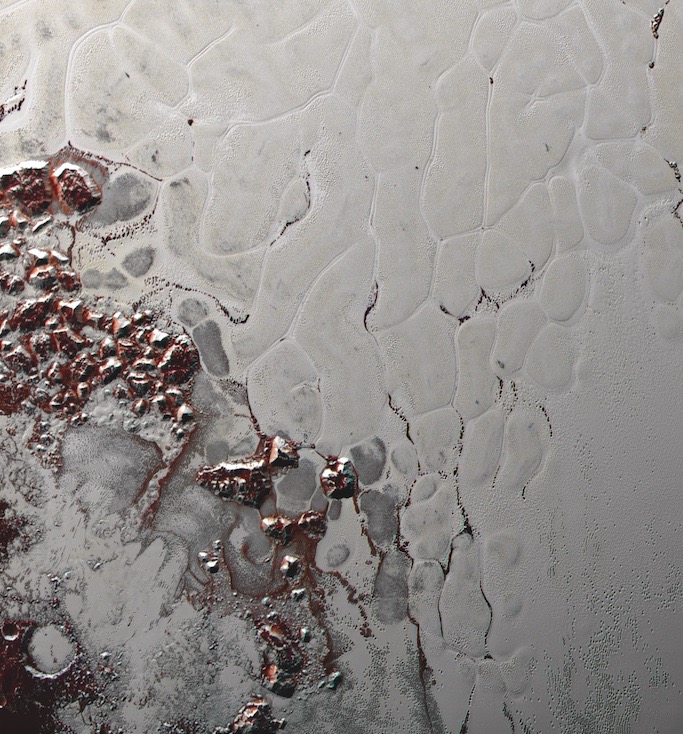Pluto's bizarre polygons now have a science explanation
The icy process may be present on other worlds.

Pluto is geologically alive.
Bizarre geometric shapes first spotted on the dwarf planet's surface in 2015 are indications that a process called sublimation is ongoing, a new study suggests.
A fresh model indicates that the polygonal nitrogen ice on Pluto — spotted by NASA's New Horizons spacecraft during a flyby — froze directly from vapor, rather than passing through a liquid state in between.
Lead author Adrien Morison, a research fellow at the University of Exeter in England, said his team's work is the first explanation, based on modeling, that shows why the polygons are there.
"Pluto is still geologically active despite being far away from the sun and having limited internal energy sources," Morison said in a university statement. "This included at Sputnik Planitia, where the surface conditions allow the gaseous nitrogen in its atmosphere to coexist with solid nitrogen."
Related: Destination Pluto: NASA's New Horizons mission in pictures

Sputnik Planitia is the most prominent geological feature on Pluto, as it is a huge oval-shaped zone straddling the equator of Pluto. Estimates from 2016, when it used to be called Sputnik Planum, peg the zone at 347,500 square miles (900,000 square kilometers) and at least 1.2 to 1.8 miles (2 to 3 km) deep.
Breaking space news, the latest updates on rocket launches, skywatching events and more!
The new study consisted of numerical simulations, showing that as the nitrogen at Pluto cools during sublimation in Sputnik Planitia, it will produce polygons consistent with the size and topographical amplitude seen in New Horizons' images. The new model also is consistent with larger worldwide climate models showing that the sublimation of Sputnik Planitia started one million or two million years ago.
This sublimation process may occur at other icy worlds around the solar system, the team noted, including Triton (a large moon at Neptune), or the Kuiper Belt objects Eris and Makemake far out in the solar system. But more observations of their surfaces would likely be required, which would in turn likely need spacecraft. Thus far there are no missions slotted to visit these various worlds.
A study based on the research was published Wednesday (Dec. 15) in Nature.
Follow Elizabeth Howell on Twitter @howellspace. Follow us on Twitter @Spacedotcom or Facebook.

Elizabeth Howell (she/her), Ph.D., was a staff writer in the spaceflight channel between 2022 and 2024 specializing in Canadian space news. She was contributing writer for Space.com for 10 years from 2012 to 2024. Elizabeth's reporting includes multiple exclusives with the White House, leading world coverage about a lost-and-found space tomato on the International Space Station, witnessing five human spaceflight launches on two continents, flying parabolic, working inside a spacesuit, and participating in a simulated Mars mission. Her latest book, "Why Am I Taller?" (ECW Press, 2022) is co-written with astronaut Dave Williams.
